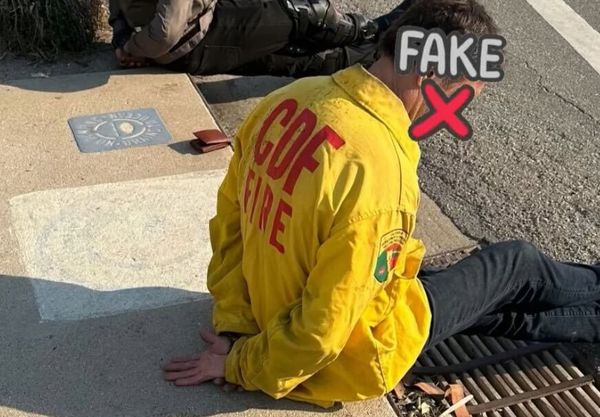
David Cornwell, who wrote for six decades under his famous penname, John le Carré, and who died Dec. 12 at the age of 89, came from a long tradition of British writers who were also spies. Unlike others in that tradition, however, his books transcend their spy-novel genre. Like espionage itself, they are about human frailty—moral ambiguity, intrigue, nuance, doubt, and cowardice. And for the same reason, le Carré’s fiction had the rare distinction of tangibly influencing his subject—the intelligence world.
Although he worked for British intelligence for only a few years, in low-level positions—le Carré was the only novelist to have served in both MI5 (Britain’s domestic-focused Security Service) and MI6 (foreign intelligence)—his experiences shaped his entire subsequent writing career. He wrote his first novel, Call for the Dead (1961), a minor masterpiece, while commuting by train to MI5’s London headquarters—making it surely the best novel ever written on a train—though he had moved to MI6 by the time it was published. At the time, both services were heavily shrouded in secrecy, far more so than today. Britain’s government then did not even publicly avow the existence of its intelligence services. Forbidden from even mentioning either service, le Carré instead amalgamated them into a single fictional institution: the Circus.
That book introduced readers to George Smiley, le Carré’s most famous character. Although brilliantly written, Smiley’s initial introduction in the novel gave no hint that he would become the greatest ever credible fictional spy. Le Carré’s first description of Smiley—short, fat, quiet, unattractive, with “really bad clothes,” looking like a “bullfrog in a sou’wester,” who marries an astonishingly beautiful titled lady—was the antithesis to Ian Fleming’s James Bond, then dominating the field of spy fiction. From that novel onward, le Carré brought a gray drudgery to the world of espionage, which readers could identify with—including many intelligence officers.
MI6 immediately had, and continues to have, a complex and difficult relationship with Smiley. Le Carré’s novels were so widely read that they came to define MI6’s public perception. Their readers were, and are, forgiven for concluding betrayal was a defining characteristic of MI6 and, following Smiley, its officers. The reality is otherwise. Declassified British intelligence records reveal the high degree of trust among its officers—responsible for keeping Britain’s most sensitive secrets.
Le Carré used some of the greatest true spy stories of the Cold War for inspiration in his novels. And they did indeed involve devastating betrayals. The treachery and damage that Kim Philby, a high-level KGB agent inside MI6, inflicted on British intelligence can be seen in one of his most celebrated novels, Tinker Tailor Soldier Spy (1974), and the career of Magnus Pym, the protagonist in A Perfect Spy (1986). The Spy Who Came In From the Cold was published the same year that Philby defected to the Soviet Union, 1963, where he joined his fellow Cambridge spies Guy Burgess and Donald Maclean.
The case of Oleg Penkovsky, a CIA and MI6 agent deep inside Soviet military intelligence, provided le Carré inspiration for The Russia House (1989). Penkovsky’s espionage about Soviet missiles helped U.S. President John F. Kennedy to resolve the Cuban missile crisis in October 1962. Echoing Penkovsky, the novel describes a Soviet nuclear physicist, Yakov, seeking to provide the West with secrets about the Soviet nuclear arsenal. The real-life British businessman whom MI6 used to contact Penkovsky, Greville Wynne, is le Carré’s inspiration for Bartholomew “Barley” Blair. Sean Connery, stepping out of his James Bond character, memorably played Blair in the 1990 film of le Carré’s novel.
Meanwhile, le Carré’s matron-like character Connie Sachs was inspired by a true-life counterintelligence expert, Milicent Bagot, described in MI5’s authorized history. Le Carré later reminisced to the author Ben Macintyre that Bagot “always wore a hat indoors and never missed a rehearsal of the Bach Choir.” Le Carré appears to have got satirical revenge on Bagot, who gave new intelligence recruits like him a hard time. He portrayed Sachs, the alter ego of the abstemious Bagot, who was looked after at home by her aging childhood nanny, as an alcoholic.
Britain’s intelligence services used their secrecy well, to create mystique—and, as le Carré would be quick to point out, to cover up uncomfortable truths. Meanwhile, le Carré used his hush-hush career to add authenticity and credibility to his novels. At a time when little was said officially about these services, his books provided audiences with a fictionalized education about them. As a result, people in postwar Britain understood more fiction than fact about the country’s secret state.
The mysteriousness the secret services cultivated, and le Carré wrote about, produced misleading portrayals of British intelligence in novels, films, and TV series. Missing from le Carré’s novels is a balanced sense of Britain’s intelligence successes—how its services protected the country’s national security, stealing secrets of adversaries. Penkovsky’s true story is one of bravery, passing MI6 and CIA valuable information from inside Soviet intelligence. It is also a tragedy: The KGB caught Penkovsky and executed him as a warning to others who might betray the Soviet Union. Le Carré never wrote a novel about Oleg Gordievsky, a highly successful agent whom MI6 recruited, ran inside the KGB, and then managed to exfiltrate to Britain from the Soviet Union.
Readers, viewers, and reviewers believed The Spy Who Came In From the Cold was the “real thing” because le Carré wrote realistically as well as brilliantly. Both the novel and the film, le Carré later wrote, were “sheer fiction from start to finish”:
This was not, however, the view taken by the world’s press, which with one voice decided that the book was not merely authentic but some kind of revelatory Message From The Other Side, leaving me with nothing to do but sit tight and watch, in a kind of frozen awe, as it climbed the bestseller list and stuck there, while pundit after pundit heralded it as the real thing.
While le Carré’s novels were fiction, their boundaries with the real world of espionage did sometimes blur. Unlike other espionage writers such as Graham Greene (a wartime MI6 officer), le Carré’s writing entered intelligence services themselves. He popularized the term “mole” in Tinker Tailor Soldier Spy to describe a long-term enemy agent who has burrowed into an intelligence service. While “mole” is the main word that le Carré introduced into professional intelligence vernacular, it first appears in Call for the Dead’s first chapter not meaning a penetration agent but as Smiley’s nickname. Only later, thanks to le Carré, did it take on its different meaning.
Le Carré is responsible for other language that has become intelligence vernacular on both sides of the Atlantic—“honeytrap,” “scalphunter,” “lamplighter” to name a few. Inside the CIA, the team responsible for hunting Soviet agents later in the Cold War was called the “Russia House.” And, with life imitating art, senior CIA officers chased their own real-life Karlas, Smiley’s Soviet intelligence nemesis.
Le Carré’s books also reached over the Iron Wall; it is no accident that his death earned a tribute from the Russian Embassy in London: “Although on the other side of the Iron Curtain, he knew and understood Russia—and is admired by millions of Russian readers.” The last head of Soviet foreign intelligence and the first head of Russia’s post-Soviet service, Yevgeny Primakov, was a great admirer of le Carré. When he visited London as President Boris Yeltsin’s foreign minister in 1997, Primakov asked the Russian ambassador to invite le Carré to lunch: “I very much enjoyed speaking with this outstanding man. … I was especially pleased to receive a copy of his recently published Smiley’s People, with the author’s inscription: ‘To Evgeny Maximovich Primakov with my sincere warm wishes and with the hope that we will live in a much better world than the one which is described here.’” Primakov told le Carré, “I identify with George Smiley.”
Successive chiefs of MI6—formally known as the Secret Intelligence Service (SIS)—did not. Sir Maurice Oldfield, chief from 1973 to 1978, told Sir Alec Guinness, who played Smiley in the acclaimed 1979 TV adaptation of Tinker Tailor Soldier Spy: “It’s young David [Cornwell] and his like that make it that much harder for the Service to recruit decent officers and sources. They read his books, and they’re put off.” Sir Richard Dearlove, chief from 1999 to 2004, told a literary festival in 2019 at Cliveden, in Britain:
We’ve all enjoyed enormously reading the Smiley books. … However, he is so corrosive in his view of MI6 that most professional SIS officers are pretty angry with him. Intelligence organizations are based on trust between colleagues. … His books are exclusively about betrayal.
Britain’s intelligence services are now a world apart from those le Carré joined six decades ago. They have come in from the cold. MI6 now has a transparent recruitment process, and its chiefs, current and retired, have public profiles—even tweeting. News of le Carré’s death led to a tribute from MI6’s current chief, Richard Moore, who tweeted condolences from all those at the “River House”—the fictional name that le Carré gave to MI6’s riverside London headquarters. Moore praised le Carré’s “evocative & brilliant novels.”
However, Moore’s earlier, first ever tweet as chief of MI6 revealed its complicated relationship with the author: He urged would-be Smileys not to apply to the service.







